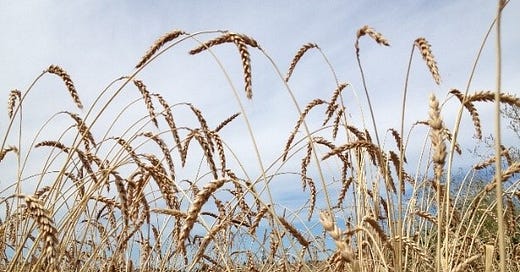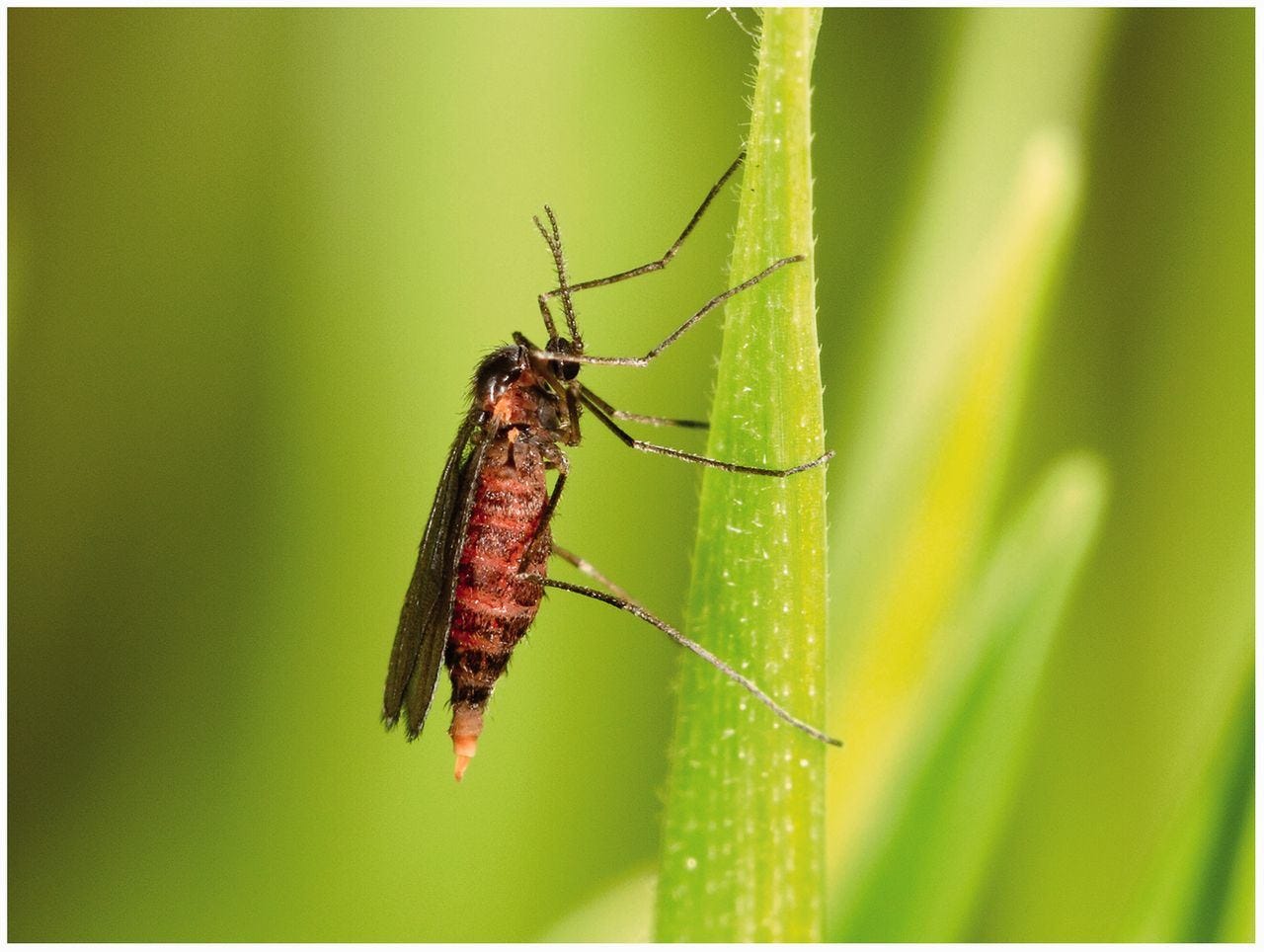ISSUE 97, WHEAT, Part 3: The Fly the the rise of White May Wheat
The Fly and the Rise of White May Wheat
To the farmers of the early South the unheralded arrival of the Hessian Fly into the region’s wheat fields seemed like a Biblical plague. Its destruction first troubled Virginia in 1785. The soft wheats that the farmers grew—the old English White Lammas Wheat, Yellow Lammas, and the old Red Chaff wheat—fell victim to infestation. All of the pernicious effects—stunted growth—straw collapse-and inhibition of grain formation due to sap loss—were registered in grains fields across Virginia in the years after the Revolution. At first called “the insect”, it became “the Hessian Fly” after planters surmised it had come to North America in the straw bedding of the hired Hessian soldiers attached to the British forces fighting in the American Revolution.
The winter wheats that became important in the South in the wake of the plague became popular because they evaded the cycle of fly infestation—they could be planted in October or even November—after the early fall hatch of the fly was well done—and were harvested in May or early June before the Spring hatch could work its effects. Three wheats in particular became central to southern wheat production in the early republic: purple straw (blue stem red wheat), red May (little red May flint), and White May (“” or “rare ripe wheat”). Today I want to tell the story of the last of these wheats, since it suggests how something found by one grower could quickly become a national resource in the face of an agronomic crisis.
Henry Isbell III was a young veteran of the American continental army cultivating his family’s land in Caroline County, Virginia, when he sent away for a batch of wheat seed from a merchant. In the years after the Revolution mercantile grocers handled much of the seed business in the United States, if a planter did not purchase directly from a European seed supplier or save his own seed. The war had disrupted local seed maintenance so reliance on merchant brokers was high among southern growers. The grocers were not known for keeping the seed segregated by variety. A 1794 news report tells the tale from this point on:
“When his wheat was in flower, [Isbell] observed a single early almost ripe. Hence he conceived an idea it might be a different species. To determine this, he carefelly preserved the wheat produced by this solitary ear, which has now multiplied to such a degree, as that several thousand bushels will be produced at the next harvest, having been distributed into many hands”{“An account of a new species of wheat,” General Advertiser (May 4, 1794), 1-the news article would be widely reprinted]
The new wheat had a number of striking qualities:
1. “This wheat ripens from 15 to 20 days earlier than any other”
2. “The straw is short by one third, than that of any other kind”
3. “The straw is encumbered by very little fodder”
Isbell’s wheat became known as “forward wheat” or “Virginia early wheat” because of the first quality; it’s short stature gained it a following because it minimized lodging (the blow down of grain in storms—a problem with tall grains). But the greatest consequences of these attributes were that it escaped the infestation cycle of the Hessian Fly and it also evaded infection by the dreaded disease, rust. By 1796 Isbell’s seed was being shipped across the United States. New Hampshire farmers in 1796 reported that “a cargo if Isbell’s forward wheat was imported the last year, from Virginia, to this town.” [New Hampshire Journal (August 30, 1796), 2.] Agricola of New York reported in 1800, on a comparative planting of Virginia early and red chaff: “The Virginia wheat ripened ten days earlier than the other, its straw was one fifth less in height, and scarcely on half in bulk. The berry was yellow, hard, large, plump and handsome. That of the red-chaff wheat was shrunk, and did not yield more than half of the quantity of Virginia wheat on the same space of ground.” Agricola calculated the Virginia yield at 42 bushels an acre. He planted on November 3. [To the Editor of the Monthly Magazine, The Monthly Magazine (May 1800), 328.]
Virginia Early was planted extensively in Virginia, Kentucky, North Carolina, Tennessee, and Maryland. In Maryland by 1800 it collected a new name, “rare-ripe wheat.” A failure of the crop in 1804 because of rainy conditions led many Marylanders to abandon the variety, but the assiduous promotion of Robert H. Goldsborough of Easton brought it back into general cultivation where it competed with Purple Straw as the dominant wheat in production. [“On Early or Rare Ripe Wheat,” Easton Gazette (December 20, 1828), 1.] This strain and this name would go to Canada where it would be improved in the 1880s.
In Virginia, in 1800, it collected the name by which it became known in most places subsequent—May Wheat. A Letter from Powhatan County, Virginia, noted the total loss of the wheat crop to rust, “except those who sowed the early wheat, or what is generally called the May wheat.” “Extract of a Letter from Manchester Virginia, dated June 12, 1800,” Philadelphia Gazette (June 21, 1800), 3. In 1807 planter W. Fontaine of Hanover, Virginia, reported the results of nine years of planting May Wheat, pointedly observing “that not one crop has failed from the seed of my Wheat, while the crops of the neighborhood suffered greatly, from the Hessian Fly.” [“A Choice Kind of Wheat,” Richmond Enquirer (August 18, 1807), 4.] May Wheat’s avoidance of the two great scourges of the grain fields of the eastern United States insured its broad success.
In part 2 of this narrative I will tell the story of this variety’s transit to the Pacific Northwest in the first decades of the 19th century, its genetic collapse in the East, and its revival as an heirloom wheat in Washington State in the past two decades.





